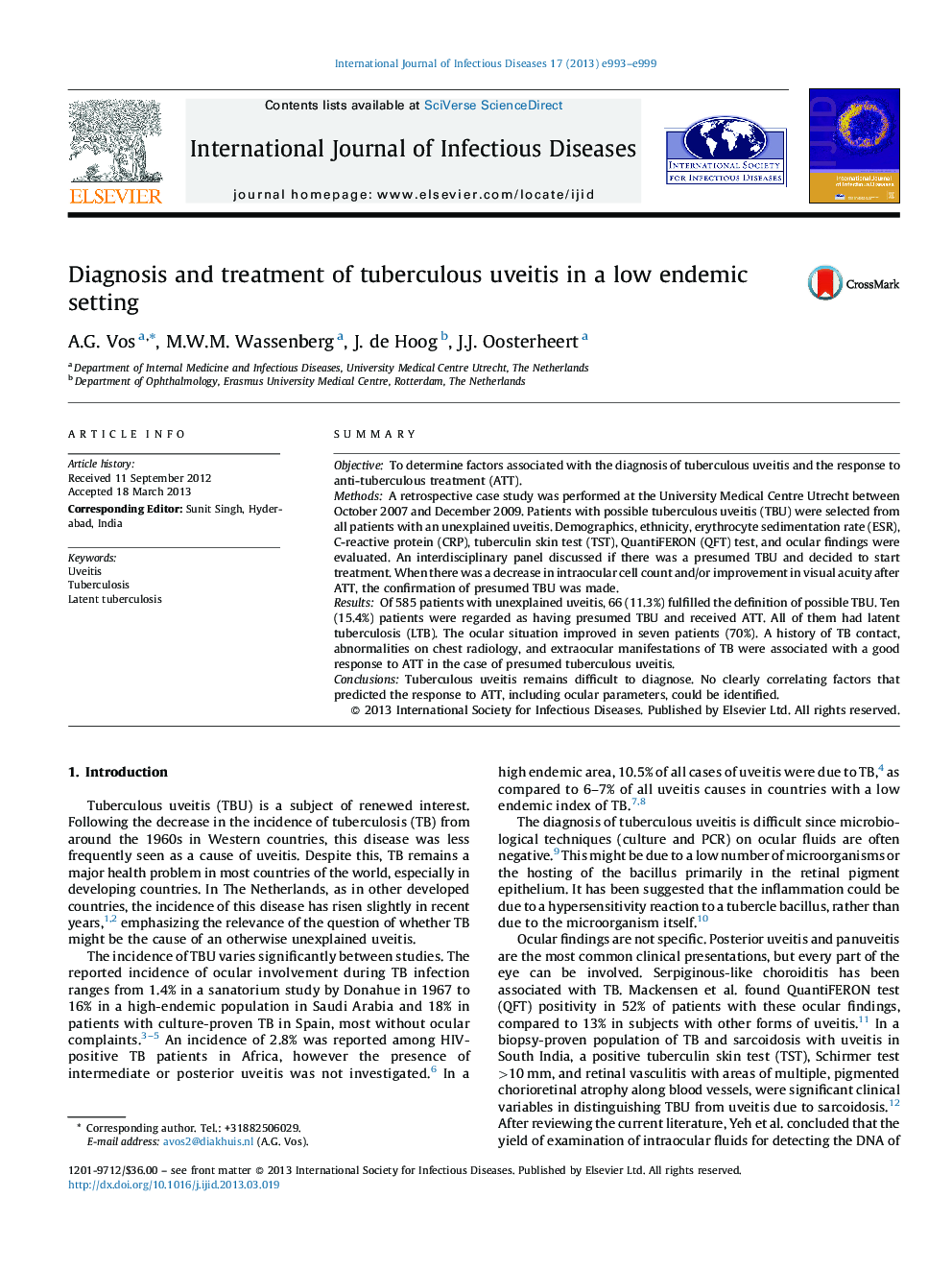| Article ID | Journal | Published Year | Pages | File Type |
|---|---|---|---|---|
| 3362942 | International Journal of Infectious Diseases | 2013 | 7 Pages |
SummaryObjectiveTo determine factors associated with the diagnosis of tuberculous uveitis and the response to anti-tuberculous treatment (ATT).MethodsA retrospective case study was performed at the University Medical Centre Utrecht between October 2007 and December 2009. Patients with possible tuberculous uveitis (TBU) were selected from all patients with an unexplained uveitis. Demographics, ethnicity, erythrocyte sedimentation rate (ESR), C-reactive protein (CRP), tuberculin skin test (TST), QuantiFERON (QFT) test, and ocular findings were evaluated. An interdisciplinary panel discussed if there was a presumed TBU and decided to start treatment. When there was a decrease in intraocular cell count and/or improvement in visual acuity after ATT, the confirmation of presumed TBU was made.ResultsOf 585 patients with unexplained uveitis, 66 (11.3%) fulfilled the definition of possible TBU. Ten (15.4%) patients were regarded as having presumed TBU and received ATT. All of them had latent tuberculosis (LTB). The ocular situation improved in seven patients (70%). A history of TB contact, abnormalities on chest radiology, and extraocular manifestations of TB were associated with a good response to ATT in the case of presumed tuberculous uveitis.ConclusionsTuberculous uveitis remains difficult to diagnose. No clearly correlating factors that predicted the response to ATT, including ocular parameters, could be identified.
